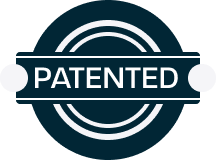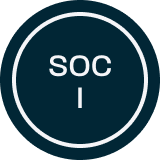EU VAT in the Digital Age (ViDA)
1. Introduction
On 8 December 2022, the European Commission1 launched a package of proposals aimed at – as the Commission expressed it – “adapting the EU VAT system to the digital age”. As regards the VAT system, the amendments2 to the EU VAT Directive (Directive 2006/1123) form the heart of this “modernization” process. The “ViDA” proposal is accompanied by proposals to amend the VAT Implementing Regulation4, which contains binding interpretations of the provisions of the VAT Directive, and to amend the arrangements for administrative cooperation (exchange of information) between the Member States of the European Union5.
Even though the Commission contends that the new VAT rules will be an effective weapon for fighting VAT fraud and that the proposed simplifications will save businesses6 large amounts of money, it remains to be seen whether the proposed rules will actually come into existence. The Commission may have the exclusive power within the European Union (EU) to propose new tax rules, it is up to the 27 Ministers for Finance of the Member States of the European Union (“the EU Council”) to adopt new tax legislation and their decision must be unanimous. In this context, it is irrelevant that the European Parliament (EP) generally supports initiatives to fight VAT fraud and to “modernize” VAT reporting obligations. In practice, the EP’s role in the framework of EU tax legislation is limited to issuing an Opinion on the Commission’s proposals. In that Opinion, the EP may suggest improvements to the Commission’s proposal but the Commission and the Council commonly ignore those suggestions. In recent years, the Commission had no option but to withdraw several VAT proposals, which it presented as being essential for the functioning of the EU VAT system, such as the proposal for redefining the scope of the exemption for financial services and the proposal for a standard (harmonized) VAT return, simply because the EU Council could not come to an agreement on the new rules (no unanimity).
The proposed VAT rules “for the digital age” are very detailed; the legislative text counts 19 printed pages and the amendments are envisaged to come into effect step by step: the first batch of amendments should come into force on 1 January 2024 and other batches will follow on 1 January 2025, 2026 and 2028.
2. ViDA proposal
The Commission’s ViDA proposal has three main pillars:
- amending the VAT reporting and invoicing obligations;
- extending the rules relating to B2C transactions through “platforms” and “facilitators”; and
- extending the scope of the “one-stop-shop” (OSS) arrangements and the reverse-charge mechanism in order to minimize the need for multiple VAT registrations in the EU.
2.1. VAT reporting and invoicing obligations
The current rules in the VAT Directive impose on businesses two main reporting obligations. All businesses must file periodic VAT returns, which contain information on the VAT liability for the tax period, and, if they are engaged in cross-border transactions, businesses must also file “recapitulative statements”, which contain information on the total value of intra-Community supplies of goods7 and B2B cross-border services supplied to individual customers in the reporting period. The tax and reporting periods for large businesses are generally the calendar month but there are variations in specific Member States, which makes it complex to match the information derived from recapitulative statements with information derived from the related VAT returns of the various parties involved in the underlying transactions. The purpose of the recapitulative statements, which must be filed by the suppliers and service providers in question, is to enable the national tax authorities to check whether the recipients of the intra-Community transactions have actually declared the resulting VAT liabilities (on intra-Community acquisitions of goods and under the “reverse-charge mechanism”8 in relation to B2B cross-border services) through their periodic VAT returns.
2.1.1. Digital reporting system for intra-Community transactions9
Under the ViDA proposal, the present periodic (aggregate) “recapitulative statements” will be replaced by a transaction-based, “digital reporting system” (Digital Reporting Requirement, DRR) for intra-Community transactions. The proposed DRR for intra-Community transactions will cover the same transactions that are currently covered by the recapitulative statements, with the exception of the call-off stocks (see 2.3.2. below). In addition, supplies of goods and services subject to the reverse-charge mechanism in Article 194 of the VAT Directive (see 2.3.1. below) will also be included in the proposed DRR.
Under the proposed DRR, businesses must transmit, in electronic format and in accordance to a “European Standard10”, the information on a transaction-by-transaction basis within two working days following the date on which the related invoice was (or had to be) issued. Additional information includes the identification of the bank account into which the payment of the invoice will be credited and the dates agreed for payment of the consideration.
2.1.2. Digital reporting system for domestic transactions11
In addition to replacing the recapitulative statements relating to intra-Community (cross-border) transactions by new DRRs, the ViDA proposal also aims to achieve harmonization of the existing and future national reporting systems for domestic supplies of goods and services. As the Commission notes in the Explanatory Memorandum, several Member States have already introduced in their national VAT legislation various types of DRRs relating to domestic transactions and those DRRs vary substantially from one Member State to the other. The Commission proposes to harmonize the national DRRs for domestic transactions and align them with the proposed DRRs for intra-Community transactions. The application of national DRRs for domestic transactions remains optional for Member States but, if they decide to introduce new, or maintain existing, DRRs, Member States will have to adapt them to the features of the harmonized reporting system, albeit that they may offer businesses additional and different methods for the transmission of the data.
2.1.3. E-invoicing
Since VAT invoices are essential for the functioning of the proposed DRRs, the ViDA proposal contains various measures12 to make them more suitable for that purpose:
- electronic invoicing will be the default system for issuing VAT invoices (the use of printed VAT invoices will only be possible in exceptional situations) and businesses will always be allowed to issue electronic invoices according to the European standard13;
- the deadline for issuing electronic VAT invoices will be reduced to two days after the chargeable event takes place in relation to zero-rated intra-Community supplies of goods and services supplied by non-resident businesses subject to the reverse-charge mechanism;
- the current possibility to issue “summary invoices” covering transactions which are carried out in the course of a calendar month will be eliminated; and
- the content of the new electronic VAT invoices will be extended to include the identifier of the bank account in which the payment for the invoice will be credited and the agreed dates and amount of each payment relating to a concrete transaction.
The definition of “electronic invoice” in the VAT Directive will be aligned with the concept in Directive 2014/55/EU on electronic invoicing in public procurement. As a result, when referring to electronic invoices in the VAT Directive, reference will be made to “structured electronic invoices”.
2.2. VAT treatment of platforms (facilitators)
Many businesses operate websites (platforms) on which they offer a large variety of goods to final consumers all over the world. In some cases, the operator of the platform supplies the goods himself but, in other cases, the operator will channel the final customer's order and payment (less a commission) to a third-party supplier. In the latter scenario, the operator of the website “facilitates”14 the transaction between the third-party supplier and the final consumer.
Under the E-Commerce Directive15, which came into effect on 1 July 2021, facilitators are deemed to have received and supplied those goods themselves. In other words, if the goods are actually supplied to an EU final consumer by a third party, the transaction is split up, for VAT purposes, into a supply of goods made by the third-party (“underlying”) supplier to the "facilitator" and, subsequently, a second supply of the same goods made by the facilitator to the final consumer. The “deemed supplier” rule applies to:
- distance sales of goods imported from outside the EU in consignments of an intrinsic value not exceeding EUR 150, and
- the supply of goods within the EU by a non-EU business to an EU final consumer.
Under the ViDA proposal, the “deemed supplier”16 rule will be extended to include the short-term rental of accommodation and passenger transport through a platform, regardless of the VAT status of the actual service provider. This rule has the effect that, even if the actual service provider is not, and does not have te be, registered for VAT, the services are none the less subject to VAT to be remitted by the facilitator.
Further, the ViDA proposal will clarify that:
- just like “intermediary services”17, facilitation services provided by the platform to the actual suppliers are deemed to be supplied18 at the place where the underlying supply is deemed to be made;
- the supply made by the actual supplier to the platform will be exempt from VAT (without the right to deduct related input VAT);
- the rental of short-term accommodation must be regarded as a sector similar in nature to the hotel sector, which means that the services are not exempt from VAT;
- the supply by the platform to the final customer does not have an impact on the right to deduct input VAT in relation to the platform’s activities; and
- for supplies falling outside the “deemed supplier model”, the platform will be obliged to keep business records relating to both B2B and B2C supplies.
2.3. VAT registration requirements in the EU
The Commission presents the third batch of proposed amendments as the “introduction of Single VAT Registration” (SVR) which suggests that the Commissions intends to launch a new, comprehensive regime in the area of VAT registration. That suggestion is incorrect. SVR simply refers to the extension of a couple of existing regimes (the reverse-charge mechanism and the One-Stop-Shop schemes, “OSS schemes”), which will have the effect of reducing the necessity for EU businesses19 to register for VAT in other Member States than that where they are established or for non-EU businesses to register for VAT in the EU under the normal registration rules.20
2.3.1. Reverse-charge mechanism
The VAT Directive provides that Member States must or may apply the reverse-charge mechanism in relation to specific transactions or categories of transactions.21
Under Article 194 of the VAT Directive, Member States currently have the power to apply the reverse-charge mechanism in relation to all transactions that are subject to VAT in their Member State, if the supplies of goods or services are made by non-resident suppliers. Not all Member States make fully use of that option. Under the ViDA proposal, the Commission intends to make Article 194 “compulsory”, to the effect that all Member States must apply the reverse-charge mechanism to all B2B supplies of goods and services made by non-resident businesses.
2.3.2. One-Stop-Shop arrangements
In relation to B2C transactions, the reverse-charge mechanism cannot be applied but non-resident suppliers can nonetheless avoid multiple registrations in the European Union by making use of one of the One-Stop-Shop (OSS) schemes or the Import One-Stop-Shop (IOSS) scheme.
The one-stop-shop schemes enable EU and non-EU businesses that are not registered for VAT in the Member State where the transactions are subject to VAT22, to register online in relation to B2C transactions in one of the EU Member States and comply online in the Member State of registration with the VAT obligations (registration, filing periodic VAT returns, remittance of VAT) in all other Member States. The applicable VAT rates are the VAT rates of the Member States of consumption. The Member State of registration is responsible for distributing the VAT revenues to the Member States where the VAT is due.
However, the one-stop-shop schemes are optional (suppliers are free to opt for the use of the schemes) and, in addition, the IOSS scheme is limited to the importation of goods of a relatively low value (€150). In the framework of the Commission’s SVR, it would be logical to expect that the Commission would propose to abolish the €150 ceiling for the purposes of the IOSS scheme. That logical measure is not included in the ViDA proposal.
2.3.2.1. Non-Union OSS scheme
From 1 July 2021, the non-Union OSS scheme applies to all services supplied by non-EU service providers to EU final consumers if the services are subject to VAT ("deemed to be supplied for VAT purposes") in the final consumer's Member State. Apart from TBE services and, depending on the circumstances, the non-Union scheme may apply to, inter alia, passenger transport, removal services or to services connected with immovable property, if the property is located in the EU.24
Under the ViDA proposal:
- the scope of the non-Union OSS scheme will be extended to services provided by non-EU businesses to all final consumers, even if they do not have their permanent address or usual residence in a Member State;
- Member States may no longer provide that VAT is to become chargeable no later than the time the supplier issues the related invoice or receives payment from the customer; and
- amendments to the VAT returns can be made in the same return insofar as these amendments take place before the time that the return was required to be submitted.
2.3.2.2. Union OSS scheme
From 1 July 2021, the Union OSS scheme applies to:
- all services supplied by EU service providers to final consumers resident in another Member State, if the services are subject to VAT ("deemed to be supplied for VAT purposes") in the final consumer's Member State, which is true in almost all cases in relation to TBE services. Apart from TBE services, the Union scheme may apply to passenger transport or removal services or to services connected with immovable property, including the services of architects and real estate agents, if the property is located in another Member State, and
- "intra-Community distance selling", i.e. supplies of goods that are transported from one Member State to another by or on behalf of the supplier or where the supplier intervenes indirectly in the transport of the goods.25
The ViDA proposal provides that:
- the concept of intra-Community distance selling of goods will be extended to include second-hand goods, works of art, collectors’ items and antiques, which means that those transactions will be subject to VAT at the place (the Member State) of destination and that suppliers may account for VAT through the Union OSS scheme. In this context, a new place-of-supply rule provides that supplies of works of art and antiques without dispatch or transport (or supplies where the dispatch or transport of the goods begins and ends in the same Member State) are taxed at the place where the customer is resident;
- for the purposes of the Union OSS scheme, the definition of Member State of consumption will be broadened to include supplies of goods with assembly or installation, supplies of goods on board ships, aircraft or trains, and supplies of gas, electricity, heating and cooling, and domestic supplies of goods;
- the Union OSS scheme can also be used insofar as these goods are supplied to businesses whose intra-Community acquisitions of goods are not subject to VAT;
- the Union OSS scheme can also be applied to domestic supplies of “margin-scheme goods”, i.e., second-hand goods, works of art, collectors’ items and antiques, by taxable dealers to other businesses;
- also zero-rated and exempt supplies of goods and services are covered by the Union OSS scheme and, therefore, must be reported in the Union OSS VAT returns; and
- amendments to Union OSS VAT returns after the time that the return had to be submitted, must be made in a subsequent return.
2.3.2.3. Import scheme (IOSS)
From 1 July 2021, the import one-stop-shop scheme (IOSS scheme) can be applied to "distance selling of imported goods", provided that the intrinsic value of the imported goods does not exceed €150. If the supplier accounts for VAT under the IOSS scheme on the supply of the imported goods to EU final consumers (at the VAT rate applicable in the Member State of consumption), the importation of the goods is exempt under a new exemption.26
Under the ViDA proposal,
- the deemed supplier rule will be extended to include all supplies of goods within the EU facilitated by an electronic interface, irrespective of where the underlying supplier is established and the status of the purchaser. This rule will also apply to certain transfers of own goods that are facilitated via an electronic interface; and
- the use of the IOSS scheme will become mandatory for electronic interfaces facilitating certain distance sales of imported goods as deemed supplier.
2.3.2.4. OSS scheme for transfers of own goods
Under the ViDA proposal, a new OSS simplification scheme will be introduced for “transfers of own goods”.27 It should be noted that, unlike the other OSS schemes, the OSS scheme for transfers of own goods applies to B2B transactions.
The new OSS scheme for transfers of own goods is available to EU and non-EU businesses and the Member State of registration is the Member State where the transferor is established or, if the transferor is not established in the EU, the Member State where the transferor has a fixed establishment or, where the transferor is not established in the EU and does not have a fixed establishment there, the Member State where transport of the own goods begins. Where they transfer goods from several Member States, non-EU transferors may choose one of those Member States as the Member State of registration (multiple registrations are not allowed). Once they apply the new OSS scheme, transferors must use the scheme for all other transfers of own goods. They must file an electronic VAT return every month, even if they have not transferred any own goods in that month. The VAT returns must specify the Member States of destination.
Application of the new OSS scheme for transfers of own goods has the strange consequence that the intra-Community acquisition by the transferor of the own goods in the Member State of destination will be exempt from VAT. This exemption can only be explained on the basis of the feature that all OSS schemes have in common, i.e., OSS VAT returns cannot be used to recover any deductible input VAT (including the VAT that is normally due in the Member State of arrival on the intra-Community acquisition of the own goods).
Call-off stocks
The Commission contends that the new OSS scheme for transfers of own goods also covers cross-border movements of goods, from one Member State to another, which are currently covered by the call-off stock arrangements28 in Article 17a of the VAT Directive. Although the new OSS system is optional, the Commission proposes to delete Article 17a, which means that the OSS system will become mandatory in relation to call-off stocks. Replacement of Article 17a by the OSS scheme for transfers of own goods does not have any effect for the transferror (under Article 17a, the transferror does not have to register in the potential customer’s Member State because the transfer of the goods is ignored) but the potential customer’s taxed intra-Community acquisition simply evaporates. The problem is that, in the latter scenario, two parties are involved. The customer must normally account for VAT on intra-Community acquisitions of goods, unless the supplier uses the OSS scheme for transfers of own goods.
3. Conclusion
The ViDA proposal contains numerous amendments. This article only contains the most important material amendments. It remains to be seen how the Ministers for Finance of the EU will respond to the proposal. It is also possible that, in the course of the discussions in the Council on the ViDA proposal, the proposed measures will be changed.
The start of the discussions may be delayed because more than six weeks after the Commission launched it, the proposal is still only available in the English language. At the end of January 2023, none of the translations in the other 23 official languages were available.
Should it be adopted, the ViDA proposal will undoubted solve specific problems and present specific simplifications for businesses. However, it will also contribute to making the entire EU VAT system excessively complex.
__________________________________________________
1The European Commission (the “Commission”) is the executive power of the European Union.
2Proposal of 8 December 2022 for a Council Directive amending Directive 2006/112/EC as regards VAT rules for the digital age, COM(2022) 701, or “ViDA proposal”.
3Council Directive 2006/112/EC of 28 November 2006 on the common system of value added tax, OJ L 347 of 11 December 2006.
4Proposal of 8 December 2022 for a Council Implementing Regulation amending Council Implementing Regulation (EU) No. 282/2011 as regards information requirements for certain VAT schemes, COM(2022) 704.
5Proposal of 8 December 2022 for a Council Regulation amending Regulation (EU) No. 904/2010 as regards the VAT administrative cooperation arrangements needed for the digital age, COM(2022) 703.
6In this article, the legally correct term "taxable person" is replaced by “business”. Consequently, "B2C transactions" are supplies of goods or services made by businesses to recipients that do not qualify as "taxable persons" (i.e., final consumers or organizations not engaged in economic activities). B2B transactions are transactions between businesses (“taxable persons”).
7Intra-Community supplies of goods are B2B supplies of goods that are transported from one Member State to another. Intra-Community supplies of goods are zero-rated in the Member State of departure and subject to VAT (on the intra-Community acquisition) in the Member State of arrival of the goods.
8The EU VAT system is generally based on the destination principle, which means that supplies of goods and services normally bear the VAT of the Member State where the goods or services are consumed , which is commonly the Member State where the customer is established or resident, even if the supplier is not established there. The standard VAT system is based on the obligation for suppliers of goods and services to charge VAT to their customers on the related invoice and, if they are businesses and engaged in taxed transactions, the customers (recipients of the goods and services) are entitled to deduct the input VAT from their own output VAT liabilities. This system is based on the assumption that the suppliers remit the output VAT to the tax authorities of the Member State where the transaction is subject to VAT, which may create a collection problem if the supplier is not established in that Member State. If the supplier is established elsewhere in the EU, the tax authorities may be able to collect VAT debts under the arrangements for mutual assistance between the Member States but if the supplier is not established in the EU, the tax authorities do not have legal powers to collect any VAT debts, whereas, if they hold a correct VAT invoice, the customers are still entitled to deduct the input VAT. In relation to B2B transactions, Member States may solve the collection problem by applying the reverse-charge mechanism. Under that mechanism, the suppliers do not charge VAT on the invoices to their customers. Instead, the customers must declare the VAT in their VAT return as a tax liability and they are normally entitled to deduct that VAT through the same VAT return. The reverse-charge mechanism has the following advantages:
- the supplier is not required to register for VAT in the EU if the transaction is subject to VAT (“deemed to be supplied”) in a Member State where the supplier is not registered for VAT;
- the tax authorities are not confronted with VAT debts that are uncollectible on the ground that the supplier is established outside their jurisdiction; and
- the customer does not have to finance the amount of VAT (which is approximately 20-25% of the selling price).
The disadvantage of the reverse-charge mechanism is, of course, that it undermines the VAT system; it breaks the chain of taxed transactions (the system of fractionated collection of the tax). Extending the reverse-charge mechanism to all B2B transactions would have the effect of transforming the VAT system into a retail sales tax.
9Proposed Articles 262 to 271 of the VAT Directive.
10The Commission frequently uses the adjective “European” instead of the correct term “European Union”. Not all countries in Europe form part of the European Union, such as the United Kingdom, Norway, Iceland and various countries in Eastern Europe. “European Standards” are standards in the European Union.
11Proposed Articles 271a to 273 of the VAT Directive.
12Proposed Articles 217, 218 and 232 of the VAT Directive.
13This standard is the one adopted by Commission Implementing Decision (EU) 2017/1870 of 16 October 2017 on the publication of the reference of the European standard on electronic invoicing and the list of its syntaxes pursuant to Directive 2014/55/EU of the European Parliament and of the Council.
14The concept of facilitation is defined in Articles 5b and 54b of the VAT Implementing Regulation, see also paragraph 2.4. of the article “EU VAT and E-Commerce from 1 July 2021“.
15Council Directive (EU) 2017/2455 of 5 December 2017 amending Directive 2006/112/EC and Directive 2009/132/EC as regards certain value added tax obligations for supplies of services and distance sales of goods, OJ L 348 of 29 December 2017, and Council Directive (EU) 2019/1995 of 21 November 2019 amending Directive 2006/112/EC as regards provisions relating to distance sales of goods and certain domestic supplies of goods, OJ L 310 of 2 December 2019.
16Proposed Articles 28a, 46a, 135(3), 136b, 172a, 242a, 306 of the VAT Directive.
17See Article 46 of the VAT Directive.
18The place where transactions are subject to VAT is determined on the basis of the “place-of-supply rules”. The place where goods are deemed to be supplied for VAT purposes are laid down in Articles 31 to 39 of the VAT Directive. The place where services are deemed to be supplied for VAT purposes are laid down in Articles 43 to 59c of that Directive.
19"EU businesses" are businesses that are established in the EU or, if they are established outside the EU, have a fixed establishment in the EU. For VAT purposes, a "fixed establishment" is defined as any establishment, other than the place of establishment of a business, characterised by a sufficient degree of permanence and a suitable structure in terms of human and technical resources to enable it to provide the services which it supplies. A "fixed establishment" is similar, but not identical, to a "permanent establishment" within the meaning of the OECD Model Tax Convention. "Non-EU businesses" are businesses that are not established in the EU and do not have a fixed establishment there.
20Those simplifications do not always have the intended effect. For example, the simplification for EU triangular transactions was also aimed at reducing multiple VAT registrations. In practice, the simplification had the opposite effect: many EU businesses registered in various other Member States merely to be able to make use of the simplification.
21See Articles 194 to 199b of the VAT Directive.
22The Member State where B2C services are subject to VAT (where the services are deemed to be supplied for VAT purposes) is determined on the basis of the place-of-supply rules, see Articles 46 to 50 and 55 to 59c of the VAT Directive.
23TBE services are telecommunications services, radio and television broadcasting services and electronically supplied services.
24See also paragraph 2.1. of the article “EU VAT and E-Commerce from 1 July 2021“.
25See also paragraph 2.2. of the article “EU VAT and E-Commerce from 1 July 2021“.
26See also paragraph 2.3. of the article “EU VAT and E-Commerce from 1 July 2021“.
27Proposed Articles 369xa to 369xk of the VAT Directive. “Transfers of own goods” refer to the transport of goods that form part of a business’s assets from one Member State to another, where that transport is not linked to a supply of the goods to a third party. Before the abolition of the internal tax borders (on 1 January 1993), the transport of own goods was treated as a zero-rated export in the Member State of departure, which was followed by a taxed importation in the Member State of destination. From 1 January 1993, the concepts of exports and imports within de EU were abolished and, in order to keep the tax consequences unchanged, former (zero-rated) exports were treated as (zero-rated) deemed supplies of goods (taxable transfers), which were followed by a taxed intra-Community acquisition of the goods in the Member State of destination. In this scenario, the “supplier” and the “customer” are the same entity and the consequence is that transferring businesses must be registered for VAT in the Member State of destination in order to account for VAT on the taxed intra-Community acquisition of the own goods in that Member State.
28The current arrangements for call-off stocks (including consignment goods) are applicable in the scenario in which a business first transports goods to a potential customer under the condition that the contract for the supply of the goods (the transfer of the right to dispose of the goods as owner) will come into existence at the time the potential customer actually uses the goods for his production process (call-off stocks) or the potential customer resells the goods to a third party (consignment goods). The arrangement in Article 17a of the VAT Directive has the effect that the transferring business does not “transfer own goods” at the time the goods are transported to another Member State. In a manner of speaking, the transport of the goods to another Member State is moved up in time until the potential customers actually buy the goods. At that time, the transferor makes a zero-rated intra-Community supply and the potential customer must account for VAT on the taxed intra-Community acquisition of the goods.






